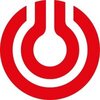Filter interviews by
Saudi Electricity Company Mechanical Maintenance Foreman Interview Questions and Answers
Saudi Electricity Company Mechanical Maintenance Foreman Interview Experiences
1 interview found
I applied via Recruitment Consulltant and was interviewed in Jan 2023. There were 3 interview rounds.

KNOWLEDGE ABOUT YOU SUBJECT,THEORY AS WELL AS PRACTICAL,TROUBLE SHOOTING METHODS AND PRACTICES.
(4 Questions)
- Q1. WHAT IS GOOD WORKING PRACTICES.
- Ans.
Good working practices refer to the set of guidelines and habits that ensure efficiency, safety, and quality in the workplace.
Following standard operating procedures
Maintaining cleanliness and organization
Regular equipment maintenance and inspections
Effective communication and teamwork
Adhering to safety protocols
Continuous learning and skill development
Efficient time management
Proper documentation and record-keeping
- Q2. WHAT IS HSE PRACTICES
- Ans.
HSE practices refer to the implementation of health, safety, and environmental measures in the workplace.
HSE practices aim to protect employees, visitors, and the environment from potential hazards.
They involve creating and enforcing safety policies and procedures.
Examples of HSE practices include conducting regular safety inspections, providing proper training and personal protective equipment, and promoting a culture...
- Q3. WHAT IS FIRST STEP TO START A SAFE JOB?
- Ans.
The first step to start a safe job is to conduct a thorough risk assessment.
Identify potential hazards and risks associated with the job
Evaluate the likelihood and severity of each risk
Implement control measures to eliminate or minimize the risks
Provide necessary training and instructions to the workers
Regularly review and update the risk assessment as needed
- Q4. HOW YOU CAN ENSURE YOU ARE IN A SAFE WORKING PRACTICE.
- Ans.
To ensure safe working practices, follow safety protocols, use personal protective equipment, maintain equipment regularly, and report any hazards or incidents.
Follow safety protocols and procedures
Use personal protective equipment (PPE) such as helmets, gloves, and safety goggles
Regularly maintain and inspect equipment to ensure it is in safe working condition
Report any hazards, near misses, or incidents to the approp...
Interview Preparation Tips
- Mechanical Maintenance
- Instrumentation
- control
- HSE
Top trending discussions






Interview questions from similar companies

Electrical Engineer Interview Questions & Answers
Dhoot Transmissionposted on 18 Apr 2022
I applied via Walk-in and was interviewed before Apr 2021. There were 2 interview rounds.

(2 Questions)
- Q1. Basic electrical engineering
- Q2. Transmission line transformer electrical wiring etc
Interview Preparation Tips
I am diploma engineering student in final sem in indore city svp group pls sir I am very interested electrical working job on
Dhoot transmission my first choice?

I applied via Naukri.com and was interviewed before Jan 2024. There were 2 interview rounds.
(2 Questions)
- Q1. What is the purpose of an uninterruptible power supply (UPS)?
- Ans.
UPS is used to provide backup power in case of electrical outages or fluctuations.
Provides continuous power supply during outages
Protects sensitive electronic equipment from damage due to power surges or fluctuations
Allows for safe shutdown of devices to prevent data loss
Commonly used in data centers, hospitals, and critical infrastructure
Types include offline, line-interactive, and online UPS
- Q2. What is a substation?
- Ans.
A substation is a facility used to transform voltage levels and distribute electricity to consumers.
Substations receive high voltage electricity from power plants or transmission lines
They transform the voltage to a lower level for distribution to homes and businesses
Substations may also include equipment for switching, controlling, and protecting the power flow
Examples of substations include step-down substations, dis
(1 Question)
- Q1. What is a relay?
- Ans.
A relay is an electrically operated switch that uses an electromagnet to mechanically control the switching of a circuit.
Relays are used to control high power circuits with low power signals.
They consist of a coil, armature, and contacts.
Common types include electromagnetic relays, solid-state relays, and reed relays.
Examples of relay applications include automotive starter solenoids and industrial control systems.
Interview Preparation Tips


(2 Questions)
- Q1. What is Transformer
- Ans.
A transformer is an electrical device that transfers electrical energy between two or more circuits through electromagnetic induction.
Transformers are used to increase or decrease the voltage in an electrical circuit.
They consist of two or more coils of wire, known as windings, that are wound around a core made of magnetic material.
The primary winding receives electrical energy from a power source, while the secondary ...
- Q2. What is rectifier
- Ans.
A rectifier is an electrical device that converts alternating current (AC) to direct current (DC).
Rectifiers are commonly used in power supplies to convert AC voltage to DC voltage.
They are made up of diodes, which allow current to flow in only one direction.
Rectifiers can be half-wave or full-wave, depending on the number of diodes used.
Examples of rectifiers include bridge rectifiers, vacuum tube rectifiers, and soli

Electrical Engineer Interview Questions & Answers
Dhoot Transmissionposted on 27 Jan 2024
I applied via Company Website and was interviewed before Jan 2023. There was 1 interview round.
(5 Questions)
- Q1. Taranformer rating ....... KVA MVA HZ
- Q2. Ohm low ...........
- Q3. Current of unit .......
- Ans.
The question is asking about the current of a unit.
The current of a unit refers to the amount of electric current flowing through a specific unit or device.
It is typically measured in amperes (A) or milliamperes (mA).
The current of a unit can vary depending on the specific device or circuit being discussed.
For example, the current of a unit could refer to the current flowing through a resistor, a transistor, or a motor...
- Q4. Transformers rating in KVA
- Ans.
Transformers are rated in KVA (kilovolt-amperes) to indicate their power capacity.
KVA stands for kilovolt-amperes, which is a unit of apparent power.
The KVA rating of a transformer indicates the maximum amount of power it can handle.
Transformers are available in various KVA ratings to suit different power requirements.
Higher KVA ratings indicate higher power capacity.
For example, a transformer with a 100 KVA rating can
- Q5. What is loop law?
- Ans.
Loop law, also known as Kirchhoff's voltage law, states that the sum of the voltages in any closed loop in a circuit is zero.
Loop law is a fundamental principle in electrical engineering.
It is also known as Kirchhoff's voltage law (KVL).
According to loop law, the algebraic sum of the potential differences (voltages) around any closed loop in a circuit is always zero.
It is based on the principle of conservation of energ...
Interview Preparation Tips

Electrical Engineer Interview Questions & Answers
Dhoot Transmissionposted on 11 Jun 2024
(2 Questions)
- Q1. What is the Transformer
- Ans.
A transformer is a device that transfers electrical energy between two or more circuits through electromagnetic induction.
Consists of two coils of wire, known as primary and secondary coils
Primary coil receives electrical energy and creates a magnetic field
Magnetic field induces a voltage in the secondary coil, transferring energy
Used in power distribution, voltage regulation, and electrical isolation
- Q2. Electrical 8 equipment
Interview Preparation Tips

I applied via Company Website and was interviewed in Mar 2023. There were 2 interview rounds.

(3 Questions)
- Q1. 1.Talk about your self . 2.Talk about your skills and experience. 3.Why your want to work in this company.
- Q2. Talk about your self. Talk about your skills and experience.
- Ans.
I am an experienced Electrical Engineer with a strong skill set in designing and troubleshooting electrical systems.
Proficient in designing electrical circuits and systems
Skilled in troubleshooting and repairing electrical equipment
Experienced in using CAD software for electrical design
Knowledgeable in electrical codes and regulations
Familiar with PLC programming and automation systems
Strong analytical and problem-solv...
- Q3. Talk about your self. Why do want to work in this company. How many years experience in electrical engineering.
- Ans.
I am an experienced electrical engineer with a passion for problem-solving and innovation. I have worked in the field for 8 years and have a strong track record of successful projects.
8 years of experience in electrical engineering
Strong problem-solving and innovation skills
Proven track record of successful projects
Passionate about the field
Continuously updating knowledge and skills
Interview Preparation Tips

I appeared for an interview in Apr 2023.

(5 Questions)
- Q1. Electrical based
- Q2. Floor maintenance equipments
- Q3. Critical questions
- Q4. Ups , pac , rodents, wld , FHC , MCP , FAS
- Q5. FM 2000 , Battery, All panel realated
Interview Preparation Tips
- Electricals

I applied via Company Website and was interviewed in Sep 2021. There were 3 interview rounds.
Interview Questionnaire
1 Question
- Q1. Basic Of Education & Work Experience Related
Interview Preparation Tips

I applied via Naukri.com and was interviewed in Jun 2022. There were 2 interview rounds.

(2 Questions)
- Q1. Hydraulic. Pneumatic
- Q2. Pump. gearbox . Bearings
Interview Preparation Tips
- Gearbox
Saudi Electricity Company Interview FAQs
Tell us how to improve this page.
Saudi Electricity Company Interviews By Designations
- Saudi Electricity Company Planning Engineer Interview Questions
- Saudi Electricity Company ITI Electrician, Electrical Maintenance Interview Questions
- Saudi Electricity Company Senior Electrical Engineer Interview Questions
- Saudi Electricity Company Fire Protection Engineer Interview Questions
- Saudi Electricity Company Electrical Engineer Interview Questions
- Saudi Electricity Company Cable Jointer Interview Questions
- Saudi Electricity Company Senior Safety Officer Interview Questions
- Saudi Electricity Company Mechanical Maintenance Foreman Interview Questions
- Show more
Interview Questions for Popular Designations
Saudi Electricity Company Mechanical Maintenance Foreman Interview Process
based on 1 interview
Interview experience
Interview Questions from Similar Companies
Saudi Electricity Company Mechanical Maintenance Foreman Reviews and Ratings
based on 1 review
Rating in categories
|
Distribution Engineer
9
salaries
| ₹20 L/yr - ₹45 L/yr |
|
Electrical Technician
8
salaries
| ₹1.8 L/yr - ₹8.9 L/yr |
|
Electrical Engineer
7
salaries
| ₹12 L/yr - ₹45 L/yr |
|
Electrician
7
salaries
| ₹2 L/yr - ₹8 L/yr |
|
Project Manager
6
salaries
| ₹30 L/yr - ₹38 L/yr |

Vestas

Dhoot Transmission

Siemens Energy

Danfoss Power Solutions
- Home >
- Interviews >
- Saudi Electricity Company Interview Questions >
- Saudi Electricity Company Mechanical Maintenance Foreman Interview Questions














